Why this lp is made is a mystery to me. Tom Sellers had a hit with Overture from Tommy. And here he covers in the same way more pop tunes with his Assembled Multitude. Wanted to sell his own two songs included on the album? Then the choise of the other titles is somewhat strange: not really middle of the road, but the way he treats them is.
I love the sound of the trombones. And you can't ruin I Want You (She's So Heavy), not even the Beatles themselves, nor George Benson could do that.
Rhino (who else) sells this record, but only in Windows Media Audio format. ???
Why the &^%$ in WMA?
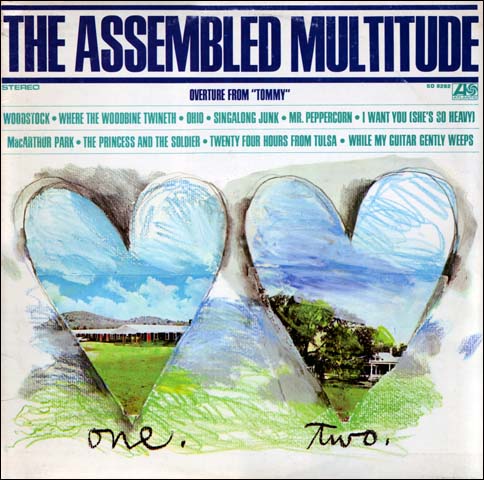
Side one:
1 Overture from "Tommy" (A Rock Opera) (Peter Townshend) [2:27]
2 Woodstock (Joni Mitchell) [2:14]
3 Where the Woodbine Twineth (Tom Sellers) [2:36]
4 Ohio (Neil Young) [2:07]
5 Singalong Junk (Paul McCartney) [1:46]
6 MacArthur Park (Jim Webb) [3:32]
Side two:
1 The Princess and the Soldier (Tony Hazzard) [2:31]
2 Twenty Four Hours from Tulsa (Burt Bacharach - Hal David) [2:31]
3 While My Guitar Gently Sleeps (George Harrison) [4:08]
4 Mr. Peppercorn (Tom Sellers) [2:29]
5 I Want You (She's So Heavy) (John Lennon - Paul McCartney) [4:19]
[Listen low quality lp rip]
Not shared anymore.
I love the sound of the trombones. And you can't ruin I Want You (She's So Heavy), not even the Beatles themselves, nor George Benson could do that.
Rhino (who else) sells this record, but only in Windows Media Audio format. ???
Why the &^%$ in WMA?

Side one:
1 Overture from "Tommy" (A Rock Opera) (Peter Townshend) [2:27]
2 Woodstock (Joni Mitchell) [2:14]
3 Where the Woodbine Twineth (Tom Sellers) [2:36]
4 Ohio (Neil Young) [2:07]
5 Singalong Junk (Paul McCartney) [1:46]
6 MacArthur Park (Jim Webb) [3:32]
Side two:
1 The Princess and the Soldier (Tony Hazzard) [2:31]
2 Twenty Four Hours from Tulsa (Burt Bacharach - Hal David) [2:31]
3 While My Guitar Gently Sleeps (George Harrison) [4:08]
4 Mr. Peppercorn (Tom Sellers) [2:29]
5 I Want You (She's So Heavy) (John Lennon - Paul McCartney) [4:19]
[Listen low quality lp rip]
Not shared anymore.
This Piece was named after a Sumerian poem (c 1700 BC).
Morton Subotnick always used the Buchla synthesizer as his electronic instrument. Don Buchla was the west coast counterpart of the east coast Bob Moog. His synthesizers didn't have real keyboards, they were made for producing electronic sounds, not melodies.
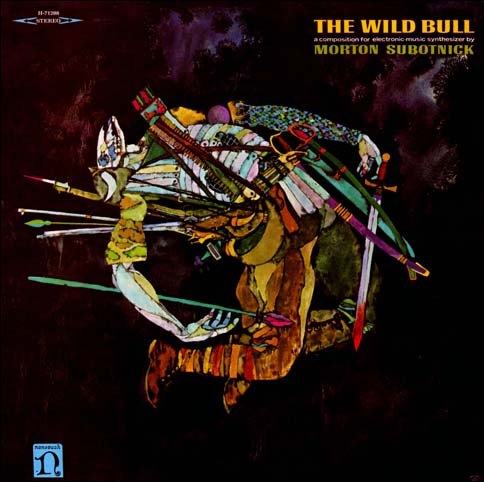
1 Part 1 [12:56]
2 Part 2 [14:58]
[Listen low quality lp rip]
[Download high quality lp rip]
Update (Comment from Matrixsynth):
The CD of this is still in print. Mort's site has ordering information.
http://www.mortonsubotnick.com/order.html
Morton Subotnick always used the Buchla synthesizer as his electronic instrument. Don Buchla was the west coast counterpart of the east coast Bob Moog. His synthesizers didn't have real keyboards, they were made for producing electronic sounds, not melodies.

1 Part 1 [12:56]
2 Part 2 [14:58]
[Listen low quality lp rip]
[Download high quality lp rip]
Update (Comment from Matrixsynth):
The CD of this is still in print. Mort's site has ordering information.
http://www.mortonsubotnick.com/order.html
The Moog is played by Kenny Ascher, arrangements are done by Alan Foust and Norman Dolph produced & tuned.
Some liner stuff:
The amazing thing about all the sounds is not that they are done one voice at a time, but rather one finger at a time. The silly machine only plays one note at a time and the temptation play a chord must be overcome... you only get the lowest note if you press more than one key. Improvisation is difficult but far from impossible if you redefine the problem.
We, being faced with the limitations of the Moog as far as chords are concerned. built a gadget called the Protorooter that structures chords above the note the keyboard is playing to alleviate the problem somewhat.
Compared with the old cut-and-splice way of making electronic music, the Moog is a tune boon. As great as we feel the Moog is for making music in the light of what is possible and what Mr. Moog is no doubt cooking up, the Moogs of today are like the Kon Tiki. It takes quite a bit of physical tuning and set-up time to achieve the sounds, though once tuned they go down very quickly.
Moog himself is quite a guy, too. Most cooperative, and now has a weekly emissary to New York to touch up any fixits and keep everyone up on the new discoveries. Moog really made quite an invention — and how appropriately space-age his name is! How bland would be the "Jones" or the "Irving Spidor-sha" as a nickname for the gadget. If he ever comes to town for a lecture, go listen.
There is nothing like inventing a synthesizer to give you expertise in its use.
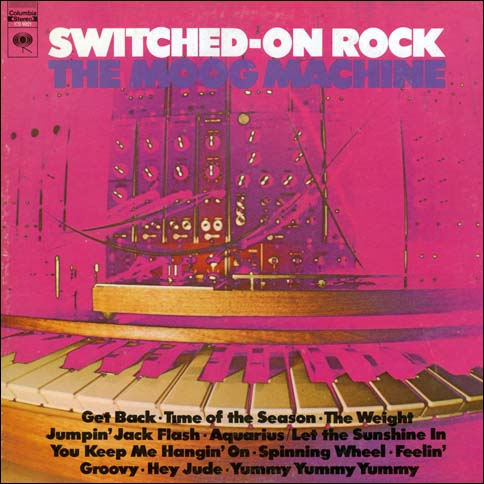
Side one:
1 Spinning Wheel
2 Jumpin' Jack Flash
3 The 59th Street Bridge Song (Feelin' Groovy)
4 Get Back
5 Yummy Yummy Yummy
Side two:
1 The Weight
2 Time Of The Season
3 Aquarius / Let The Sunshine In
4 You Keep Me Hangin' On
5 Hey Jude
[Listen low quality]
[Download high quality]
Some liner stuff:
The amazing thing about all the sounds is not that they are done one voice at a time, but rather one finger at a time. The silly machine only plays one note at a time and the temptation play a chord must be overcome... you only get the lowest note if you press more than one key. Improvisation is difficult but far from impossible if you redefine the problem.
We, being faced with the limitations of the Moog as far as chords are concerned. built a gadget called the Protorooter that structures chords above the note the keyboard is playing to alleviate the problem somewhat.
Compared with the old cut-and-splice way of making electronic music, the Moog is a tune boon. As great as we feel the Moog is for making music in the light of what is possible and what Mr. Moog is no doubt cooking up, the Moogs of today are like the Kon Tiki. It takes quite a bit of physical tuning and set-up time to achieve the sounds, though once tuned they go down very quickly.
Moog himself is quite a guy, too. Most cooperative, and now has a weekly emissary to New York to touch up any fixits and keep everyone up on the new discoveries. Moog really made quite an invention — and how appropriately space-age his name is! How bland would be the "Jones" or the "Irving Spidor-sha" as a nickname for the gadget. If he ever comes to town for a lecture, go listen.
There is nothing like inventing a synthesizer to give you expertise in its use.

Side one:
1 Spinning Wheel
2 Jumpin' Jack Flash
3 The 59th Street Bridge Song (Feelin' Groovy)
4 Get Back
5 Yummy Yummy Yummy
Side two:
1 The Weight
2 Time Of The Season
3 Aquarius / Let The Sunshine In
4 You Keep Me Hangin' On
5 Hey Jude
[Listen low quality]
[Download high quality]
Skeleton Crew was a project from ex-Henry Cow alternative guitarist Fred Frith and experimental Bay Area cellist and multi-instrumentalist Tom Cora.
Formed as a duo, the two (occasionally augmented by Zeena Parkins on keyboards and harp) toured extensively with a combination of experimental rock, noise, and folk music, even playing one concert of nothing but Eastern European folk tunes.
On stage, both musicians operated drums with their feet, while busying their hands with various stringed instruments, professional or homemade. Tape cut ups were also part of the performance.
Cora died in 1998. (all music)
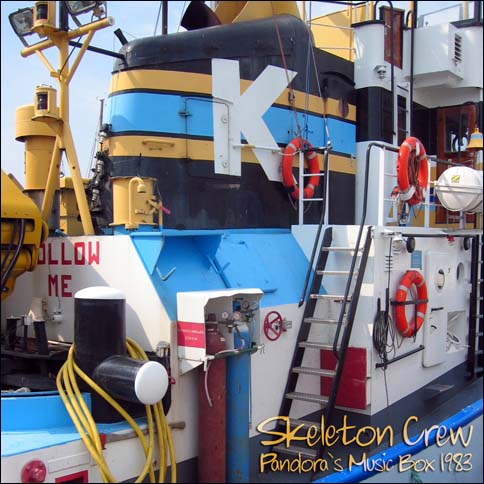
2 3/4 songs, 8'32"
[Listen low quality]
[Download high quality]
Formed as a duo, the two (occasionally augmented by Zeena Parkins on keyboards and harp) toured extensively with a combination of experimental rock, noise, and folk music, even playing one concert of nothing but Eastern European folk tunes.
On stage, both musicians operated drums with their feet, while busying their hands with various stringed instruments, professional or homemade. Tape cut ups were also part of the performance.
Cora died in 1998. (all music)

2 3/4 songs, 8'32"
[Listen low quality]
[Download high quality]
Formerly entitled: Hits from "Hair" to Hollywood.
The Moog synthesizer, heard on "Midnight Cowboy", "The Windmills of Your Mind", Let the Sunshine In" and "Be-In", is played by Peter Nero.
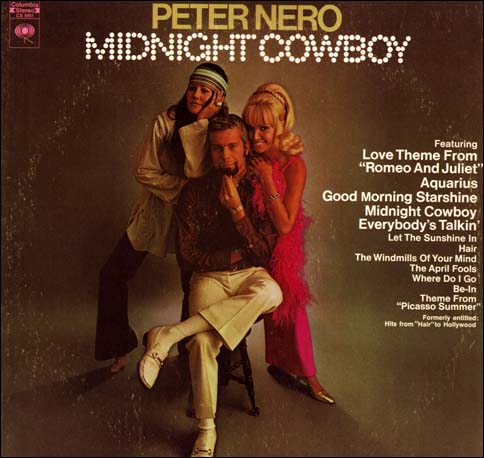
Side one:
1 Midnight Cowboy - Everybody's Talkin'
2 Love theme from "Romeo and Juliet" (A Time for Us)
3 The Windmills of your mind
4 The April Fools
5 Theme from "Picasso Summer"
Side two:
1 Aquarius
2 Let the Sunshine In
3 Be-In (Hare Krishna)
4 Where do I go
5 Hair
6 Good Morning Starshine
[Listen low quality]
[Download high quality]
The Moog synthesizer, heard on "Midnight Cowboy", "The Windmills of Your Mind", Let the Sunshine In" and "Be-In", is played by Peter Nero.

Side one:
1 Midnight Cowboy - Everybody's Talkin'
2 Love theme from "Romeo and Juliet" (A Time for Us)
3 The Windmills of your mind
4 The April Fools
5 Theme from "Picasso Summer"
Side two:
1 Aquarius
2 Let the Sunshine In
3 Be-In (Hare Krishna)
4 Where do I go
5 Hair
6 Good Morning Starshine
[Listen low quality]
[Download high quality]
I got a message from Alleee of Mondo Diablo. My Silly Beatles post inspired her to make a podcast with some of my shared music. She combined it with a lot of other worthwhile Beatles covers and a radio broadcast of a syndicated special detailing the Paul is Dead phenomenon, which is a funny idea: Paul is with Ringo the only Beatle who survived. The radio recording can be found on the 365 Days Project.
Alleee had so much material, she made two podcasts out of it: Two hours of silly Beatles and even sillier comments.
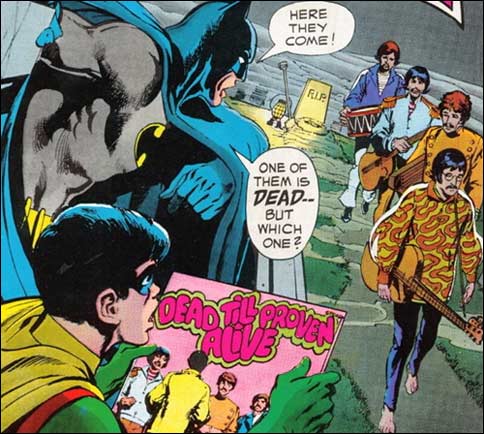
And while you are there, try the other episodes, they all have nice surprises.
Alleee had so much material, she made two podcasts out of it: Two hours of silly Beatles and even sillier comments.

And while you are there, try the other episodes, they all have nice surprises.
Original music from the man who covered lots of country hits on his moog: Country Moog & Nashville Gold. Thanks to Vasco who sent me this gem.
Both compositions were made for a dance performance.
Principal instrumentation includes: Moog IIIc modular, two interconnected Micromoogs, EML 400 Sequencer, Multivox Analog Echo and a Farfisa combo organ.
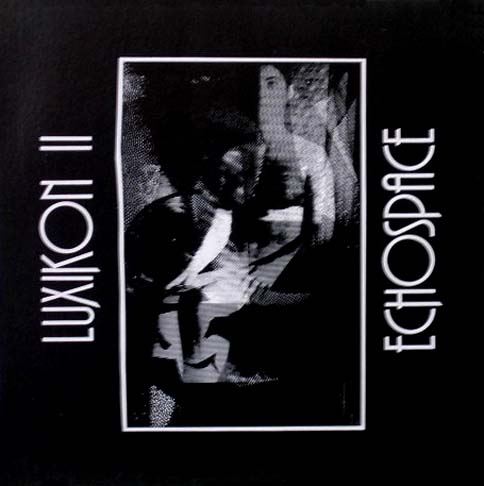
Luxikon II [14:36]
Echospace [12:30]
[Listen low quality]
[Download high quality]
Both compositions were made for a dance performance.
Principal instrumentation includes: Moog IIIc modular, two interconnected Micromoogs, EML 400 Sequencer, Multivox Analog Echo and a Farfisa combo organ.

Luxikon II [14:36]
Echospace [12:30]
[Listen low quality]
[Download high quality]
Back Next

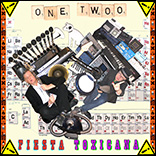
 Archives
Archives




